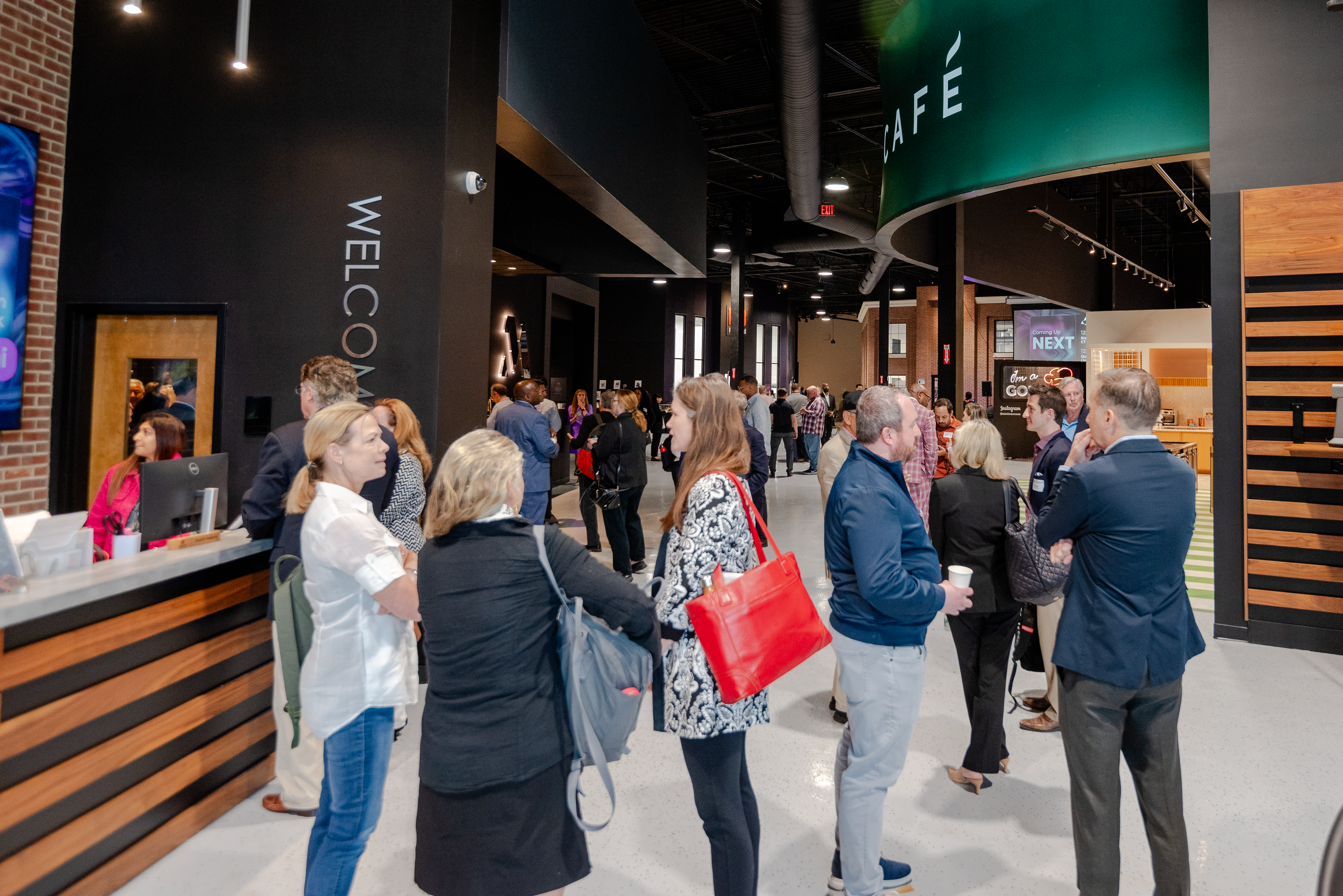
Quantum computing revolves around harnessing the unique properties of the smallest elements of matter. The subatomic particles that make up the electrons, neutrons, and protons that the average person likely recalls from chemistry class, and which behave in ways that are difficult to explain with only a high school understanding of physics.
They are literally some of the smallest things in the universe, certainly the smallest things which can be manipulated, but they can serve as the heart of computing systems capable of doing immense numbers of complex calculations at unprecedented speeds.
The promise of such technology was the focus of Quantum Revolution: Unlocking the Power of a Transformative Technology, a conversation between Hari Sreenivasan, a journalist and correspondent for the PBS NewsHour and some of the state’s leading experts on quantum technology.
The conversation was part of CT Tech Week organized by The Stamford Partnership in collaboration with the City of Stamford, GE’s CoCreate, Realist Lab and the Village Foundation.
CoCreate, which hosts GE experience and design center, FirstBuild Maker Space, and the CoFab Microfactory which produces customized GE appliances served as the host for the event.
Sreenivasan led the discussion off by asking Matthew Enjarlan, a Professor of Physics at Southern Connecticut State University to estimate where the technology stands in terms of overall development.
“When I see a headline about quantum computing should I look at it? Are we still in the 50s or 60s in terms of the internet, in the 20s or 30s in terms of astronomy,” asked Sreenivasan. “Is it wrong to be trying to think of it in those kinds of timescales and timelines?”
“It’s definitely in its infancy,” replied Enjarlan. “The internet itself starts off with DARPA Web and the military, so yeah, I guess you could say it’s early on.”
The professor noted that quantum computing could potentially allow computers to blow past Moore’s Law, a rule of thumb from the 1960s which held that the number of transistors in a computer chip double roughly every two years. That ratio served as an accurate description of how computers became simultaneously cheaper and more powerful over the past decades but have in recent years seemed less and less reliable.
“Quantum computing is sort of the next step,” Enjarlan said, admitting that what could drive quantum computing beyond that is beyond him. He did however note that there are practical engineering problems that can make the technology more accessible and widespread, since it presently involves massive pieces of machinery, large quantities of coolant, and precise laser arrays for even the most rudimentary quantum computer to be built. A mobile, let alone portable, quantum computer is years away.
Sam Samdani a Senior Industry Knowledge Expert at McKinsey & Company and the Executive Director of QuantumCT, was asked by Sreenivasan about why, given the challenges involved, Connecticut is the right place for innovation in quantum technology.
Samdani explained that QuantumCT is a public-private partnership launched as a collaboration between Yale University and UConn founded with a $1 million grant from the National Science Foundation.
“We received that grant to create a business corridor across the state of Connecticut,” Samdani said. “Why Connecticut? We believe that Yale and the University of Connecticut have a lot of physical as well as intellectual infrastructure in this area that we can build on to create opportunities for our workforce development and technologies that we can export anywhere in the world.”
He said he believes that quantum computing may lead to immediate innovation in the field of material science by making it possible to rapidly simulate how materials might behave under extreme conditions. Samdani also posited that it could allow pharmaceutical companies to more accurately predict how drugs behave and interact with each other, speeding drug development. He was excited by the prospect of combining quantum computing with artificial intelligence, though not certain how close such integration is to fruition.
Samdani concluded “we believe [quantum computing will bring] billions of dollars of economic impact for the next 10 years.”
Claudia Reuter, the Director of the Roberts Innovation Fund, part of Yale Ventures was asked about how she is approaching investing in quantum technologies.
“Have they identified a significant problem?” Reuter said she asks when evaluating proposals to the innovation fund. “Which translates to ‘is there a potential for a market there? Do they actually have proof of concept? Meaning ‘is this actually technically feasible?”
Reuter described quantum computing as a promising technology but still in the “deep tech” round of investment.
“When you’re in deep tech it could take six, seven years to get [to a product] because iterating with hardware and anything in the material world is a little more challenging from an expense perspective,” Reuter explained. Software applications are often a safer bet for investors, because while a new application or program may not change the world in the way quantum computing does, it could lead to a profitable company without conducting extensive research into complicated technology that may be years away from having a commercial application.
However, she noted that a recent applicant to the program was working on data structures for quantum computers, which will not necessarily be compatible with existing programing languages and rules.
For more information about CT Tech Week and the Quantum Revolution panel, visit https://www.cttechweek.com/























I think you could have made the Where and When of the event easier to find.